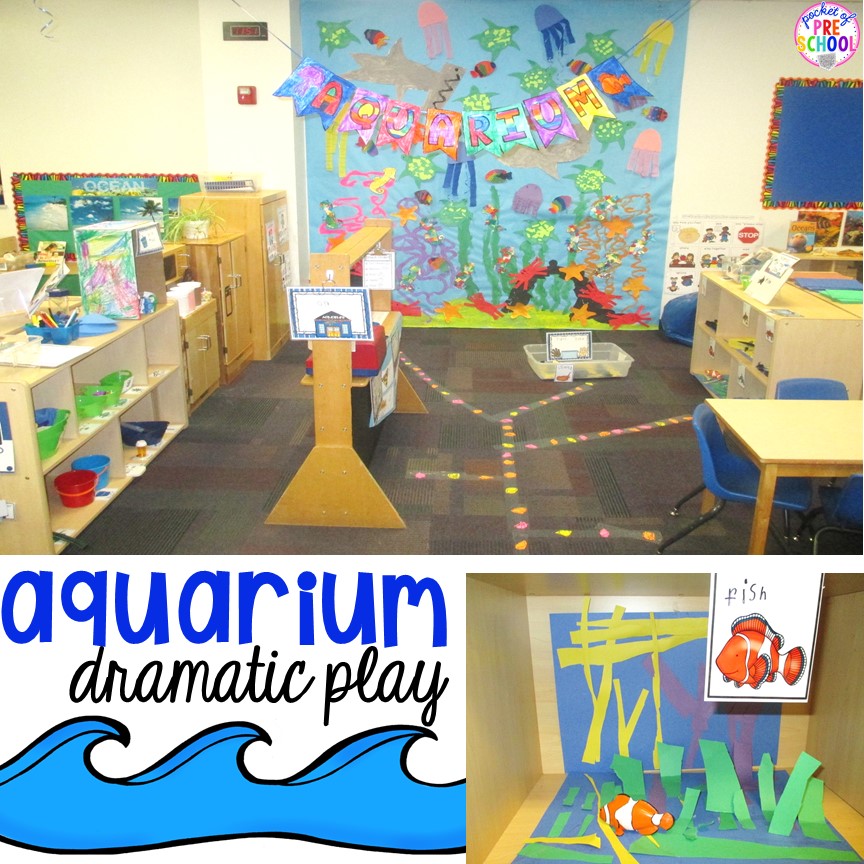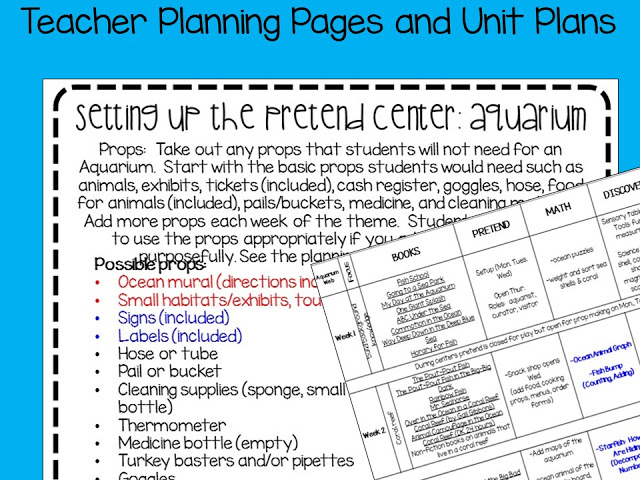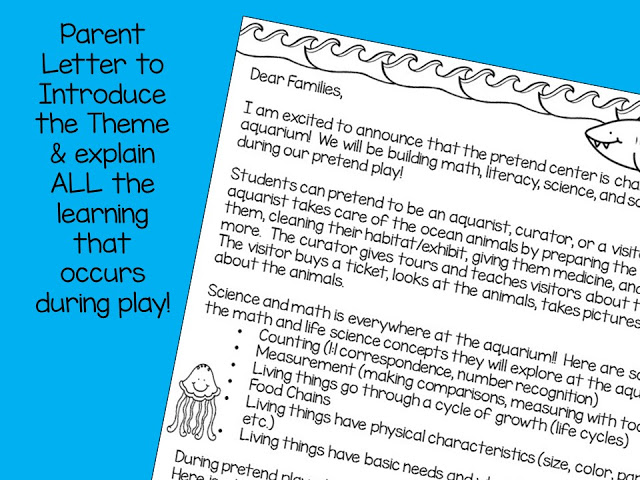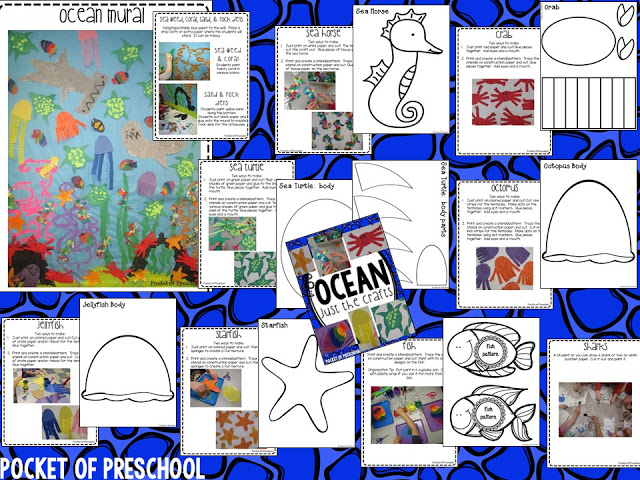Dramatic Play is a center that can get boring, so spice it up by transforming it into an Aquarium! The kids LOVED this theme, and so did the teachers! It was something new, different, and involved ocean animals. Kids LOVE ocean animals. Change the center into something that they are interested and excited to learn, and you will see a higher level of play! You can get Aquarium Dramatic Play from my TPT store by clicking HERE. Check out our Aquarium!
Aquarium Dramatic Play
Haven’t done this theme before? No worries! I did all the research and planning for you. Included are planning pages to help you know what props to gather, print, and have students create. There is a 4-week unit plan with a book list and ideas to take the ocean theme all over your classroom.
Let’s take a look at the aquarium in detail!
In the center, students can pretend to be an aquarist, curator, or visitor. The aquarist is like a zoo keeper at a zoo. The aquarist takes care of the ocean animals by preparing the food, feeding them, cleaning their
habitat/exhibit, giving them medicine, and much more. The curator sells tickets, gives tours, teaches visitors
about the animals, and works in the snack shop. The visitor buys a ticket, looks at the animals, takes pictures, and learns about the animals. To help students remember who does what, you can create role charts (pictured above).
This is our big tank (on the wall in the center). You will get all the patterns to make all the ocean animals! Click HERE to see more about how students made the ocean animal crafts.
Look at the amazing clown fish exhibit a group of students made! Click HERE to see all about how students “researched” and made the exhibits preschool-style! It was a fantastic way to integrate literacy and non-fiction books.
Students created many parts of the Aquarium. I closed the center for play for three days but made it open for crafts, exhibits, and prop-making. Don’t feel that is all that has to be finished when you open the center up for play; ours was not. It is a work in progress, just like a real aquarium.
Aquarium makes integrating other learning domains EASY! Did you see all the writing experiences I embedded in their play? There are aquarist’s reports, receipts, food orders, and animal of the day signs to write. Science and math are everywhere at the aquarium!! Here are some of the math and life science concepts they will explore at the aquarium: Counting (1:1 correspondence, number recognition), Measurement (making comparisons, measuring with tools), Living things go through a cycle of growth (life cycles), Food Chains, Living things have physical characteristics (size, color, parts, etc.), and Living things have basic needs and what those basic needs are.
Included is a parent letter to introduce the theme and explain ALL the learning that occurs during play! I want parents to know that they are learning through play and value their play.
Want to have an aquarium in your classroom? Go grab Aquarium Dramatic Play by clicking on the cover!
Look at everything that is included!
Yes all the crafts are included or you can buy the Just the Crafts if you only want the ocean animal crafts.
Like it? Pin it!
I linked up with Kindergarten Dragons for Spotlight Saturday to spotlight our Aquarium! Go check out what other teachers are spotlighting in the classroom by clicking the cover.
hey, i’m jackie!
I’m Jackie, your go-to girl for early childhood inspiration and research-based curriculum.




































